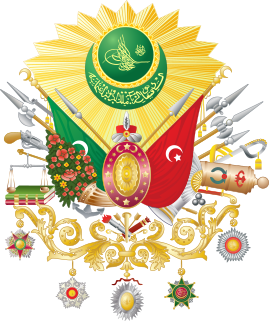 W
WThe 31 March Incident was the defeat of the Ottoman countercoup of 1909 by the Hareket Ordusu, which was the 11th Salonika Reserve Infantry Division of the Third Army stationed in the Balkans and commanded by Mahmud Shevket Pasha on 24 April 1909. The counter coup began on 31 March on the Rumi calendar, which was the official calendar of the Ottoman Empire, corresponding to 13 April 1909 on the Gregorian calendar now used in Turkey. The rebellion had begun on 13 April 1909 and was put down by 24 April 1909. Ottoman historiography link the two events under the name 31 March Incident but refers to the actions by the Hareket Ordusu, the subsequent restoration of the constitution for a third time and the deposition of Abdul Hamid II who was then replaced by his younger brother Mehmed V.
 W
WAn Ahdname, achtiname or ahidnâme is a type of Ottoman charter commonly referred to as a capitulation. During the early modern period, the Ottoman Empire called it an Ahidname-i-Humayun or an imperial pledge and the Ahdname functioned as an official agreement between the Empire and various European states.
 W
WThe Armenian reform package was a reform plan devised by the European powers in 1912-14 that envisaged the creation of two provinces in Turkish Armenia placed under the supervision of two European inspectors general, who would be appointed to oversee matters related to the Armenian issues. The inspectors general would hold the highest position in the six eastern vilayets (provinces), where the bulk of the Armenian population lived, and would reside at their respective posts in Erzurum and Van. The reform package was signed into law on February 8, 1914, though it was ultimately abolished on December 16, 1914, several weeks after Turkey's entry into World War I.
 W
WThe Auspicious Incident was the forced disbandment of the centuries-old Janissary corps by Sultan Mahmud II on 15 June 1826. Most of the 135,000 Janissaries revolted against Mahmud II, and after the rebellion was suppressed, its leaders were killed, and many of its members exiled or imprisoned, the Janissary corps was disbanded and replaced with a more modern military force.
 W
WBulgarian Millet or Bulgar Millet was an ethno-religious and linguistic community within the Ottoman Empire from the mid-19th to early 20th century. The semi-official term Bulgarian millet, was used by the Sultan for the first time in 1847, and was his tacit consent to a more ethno-linguistic definition of the Bulgarians as a nation. Officially as a separate Millet in 1860 were recognized the Bulgarian Uniates, and then in 1870 the Bulgarian Orthodox Christians. At that time the classical Ottoman Millet-system began to degrade with the continuous identification of the religious creed with ethnic identity and the term millet was used as a synonym of nation. In this way, in the struggle for recognition of a separate Church, the modern Bulgarian nation was created. The establishment of the Bulgarian Exarchate in 1870, meant in practice official recognition of a separate Bulgarian nationality, and in this case the religious affiliation became a consequence of national allegiance. The founding of an independent church, along with the revival of Bulgarian language and education, were the crucial factors that strengthened the national consciousness and revolutionary struggle, that led to the creation of an independent nation-state in 1878.
 W
WCapitulations of the Ottoman Empire were contracts between the Ottoman Empire and European powers, particularly France. Turkish capitulations, or Ahidnâmes were generally bilateral acts whereby definite arrangements were entered into by each contracting party towards the other, not mere concessions.
 W
WThe 1876–77 Constantinople Conference of the Great Powers was held in Constantinople from 23 December 1876 until 20 January 1877. Following the beginning of the Herzegovinian Uprising in 1875 and the April Uprising in April 1876, the Great Powers agreed on a project for political reforms in Bosnia and in the Ottoman territories with a majority-Bulgarian population.
 W
WDhimmī is a historical term for non-Muslims living in an Islamic state with legal protection. The word literally means "protected person", referring to the state's obligation under sharia to protect the individual's life, property, and freedom of religion, in exchange for loyalty to the state and payment of the jizya tax, which complemented the zakat, or obligatory alms, paid by the Muslim subjects. Dhimmi were exempt from certain duties assigned specifically to Muslims, and did not enjoy certain privileges and freedoms reserved for Muslims, but were otherwise equal under the laws of property, contract, and obligation.
 W
WThe dissolution of the Ottoman Empire (1908–1922) began with the Second Constitutional Era with the Young Turk Revolution. It restored the Ottoman constitution of 1876 and brought in multi-party politics with a two stage electoral system under the Ottoman parliament. The constitution offered hope by freeing the empire's citizens to modernize the state's institutions and dissolve inter-communal tensions.
 W
WA dragoman was an interpreter, translator, and official guide between Turkish, Arabic, and Persian-speaking countries and polities of the Middle East and European embassies, consulates, vice-consulates and trading posts. A dragoman had to have a knowledge of Arabic, Persian, Turkish, and European languages.
 W
WThe First Constitutional Era of the Ottoman Empire was the period of constitutional monarchy from the promulgation of the Kanûn-ı Esâsî, written by members of the Young Ottomans, that began on 23 December 1876 and lasted until 14 February 1878. These Young Ottomans were dissatisfied by the Tanzimat and instead pushed for a constitutional government similar to that in Europe. The constitutional period started with the dethroning of Sultan Abdulaziz. Abdul Hamid II took his place as Sultan. The era ended with the suspension of the Ottoman Parliament and the constitution by Sultan Abdul Hamid II, with which he restored his own absolute monarchy.
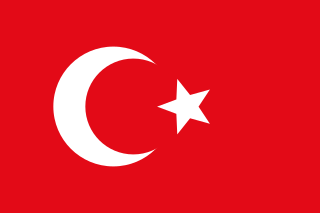 W
WThe Ottoman Empire used a variety of flags, especially as naval ensigns, during its history. The star and crescent came into use in the second half of the 18th century. A buyruldu (decree) from 1793 required that the ships of the Ottoman Navy were to use a red flag with the star and crescent in white. In 1844, a version of this flag, with a five-pointed star, was officially adopted as the Ottoman national flag. The decision to adopt a national flag was part of the Tanzimat reforms which aimed to modernize the Ottoman state in line with the laws and norms of contemporary European states and institutions.
 W
WThe Great Eastern Crisis of 1875–78 began in the Ottoman Empire's territories on the Balkan peninsula in 1875, with the outbreak of several uprisings and wars that resulted in the meddling of international powers, and was ended with the Treaty of Berlin in July 1878.
 W
WHatt-i humayun, also known as hatt-i sharif, is the diplomatics term for a document or handwritten note of an official nature composed by an Ottoman Sultan. The terms come from hatt, hümayun (imperial) and şerif. These notes were commonly written by the Sultan personally, although they could also be transcribed by a palace scribe. They were written usually in response to, and directly on, a document submitted to the sultan by the grand vizier or another officer of the Ottoman government. Thus, they could be approvals or denials of a letter of petition, acknowledgements of a report, grants of permission for a request, an annotation to a decree, or other government documents. Hatt-ı hümayuns could be composed from scratch, rather than as a response to an existing document. After the Tanzimat reform (1856), aimed to modernize the Ottoman Empire, hatt-ı hümayuns of the routine kind were supplanted by the practice of irâde-i seniyye, in which the Sultan's spoken response was recorded on the document by his scribe.
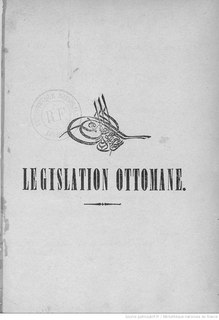 W
WThe Imperial Reform Edict was a February 18, 1856 edict of the Ottoman government and part of the Tanzimat reforms. The decree from Ottoman Sultan Abdulmejid I promised equality in education, government appointments, and administration of justice to all regardless of creed. The decree is often seen as a result of the influence of France and Britain, which assisted the Ottoman Empire against the Russians during the Crimean War (1853–1856) and the Treaty of Paris (1856) which ended the war.
 W
WHussein bin Ali Al-Hashimi was an Arab leader from the Banu Hashim clan who was the Sharif and Emir of Mecca from 1908 and, after proclaiming the Great Arab Revolt against the Ottoman Empire, King of the Hejaz from 1916 to 1924. At the end of his reign he also briefly laid claim to the office of Caliph. He was a 37th-generation direct descendant of Muhammad, as he belongs to the Hashemite family.
 W
WThis is a list of khans of the Crimean Khanate, a state which existed in present-day southern Ukraine from 1441 until 1783. Crimean Tatars, although not a part of the Ukrainian ethnos, are deeply interconnected, having ruled a large part of modern Ukraine over the span of 300 years.
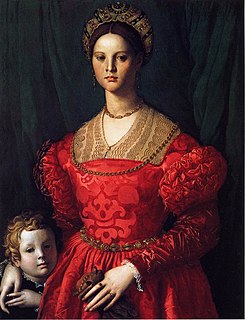 W
WGracia Mendes Nasi was a Portuguese intellectual and one of the wealthiest Jewish women of Renaissance Europe. She married Francisco Mendes/Benveniste. She was the aunt and business partner of Joao Micas, who became a prominent figure in the politics of the Ottoman Empire. She also developed an escape network that saved hundreds of Conversos from the Inquisition. Her name Gracia is Spanish for the Hebrew Hannah, which means Grace; she was also known by her Christianized name Beatrice de Luna.
 W
WThe Nizam-i Djedid was a series of reforms carried out by the Ottoman Sultan Selim III during the late 18th and early 19th centuries in a drive to catch up militarily and politically with the Western Powers. The New Order regime was launched by Selim III and a coalition of reformers. The central objective was the creation of a professional army along European lines and a private treasury to finance military spending, as well as other administrative reforms. The age of the New Order can be generally said to have lasted from 1789 to 1807, ending with the deposition of Selim III by a Janissary coup.
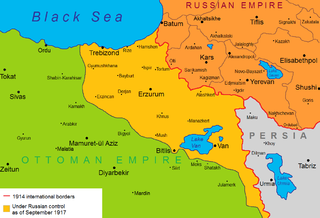 W
WThe occupation of Western Armenia by the Russian Empire during World War I began in 1915 formally ended by the Treaty of Brest-Litovsk. It was sometimes referred to as the Republic of Van by Armenians. Aram Manukian of Armenian Revolutionary Federation was the de facto head until July 1915. It was briefly referred to as "Free Vaspurakan". After a setback beginning in August 1915, it was re-established in June 1916. The region was allocated to Russia by the Allies in April 1916 under the Sazonov–Paléologue Agreement.
 W
WThe Ottoman Empire came into World War I as one of the Central Powers. The Ottoman Empire entered the war by carrying out a surprise attack on Russia's Black Sea coast on 29 October 1914, with Russia responding by declaring war on 5 November 1914. Ottoman forces fought the Entente in the Balkans and the Middle Eastern theatre of World War I. The Ottoman Empire's defeat in the war in 1918 was crucial in the eventual dissolution of the empire in 1921.
 W
WThe Ottoman Empire's entry into World War I began when two recently purchased ships of its navy, still manned by their German crews and commanded by their German admiral, carried out the Black Sea Raid, a surprise attack against Russian ports, on 29 October 1914. Russia replied by declaring war on 1 November 1914 and Russia's allies, Britain and France, then declared war on the Ottoman Empire on 5 November 1914. The reasons for the Ottoman action were not immediately clear. The Ottoman government had declared neutrality in the recently started war, and negotiations with both sides were underway.
 W
WThe Second Constitutional Era of the Ottoman Empire established shortly after the 1908 Young Turk Revolution which forced Sultan Abdul Hamid II to restore the constitutional monarchy by the revival of the Ottoman Parliament, the General Assembly of the Ottoman Empire and the restoration of the constitution of 1876. The parliament and the constitution of the First Constitutional Era (1876–1878) had been suspended by Abdul Hamid in 1878 after only two years of functioning. Whereas the First Constitutional Era had not allowed for political parties, the Young Turks amended the constitution to strengthen the popularly elected Chamber of Deputies at the expense of the unelected Senate and the Sultan's personal powers, and formed and joined many political parties and groups for the first time in the Empire's history.
 W
WThe Serb Democratic League in the Ottoman Empire was an Ottoman Serb political organisation established on August 13, 1908, at the First Serb Conference, immediately after the Young Turk Revolution.
 W
W"Sick man of Europe" is a label given to a nation which is located in some part of Europe and experiencing a time of economic difficulty or impoverishment. The term was first used in the mid-19th century to describe the Ottoman Empire, and after the dissolution of the Ottoman Empire in the early 20th century, the term has been applied to European nations such as the United Kingdom or Germany.
 W
WThe Tanzimat was a period of reform in the Ottoman Empire that began in 1839 and ended with the First Constitutional Era in 1876.
 W
WThe Tehcir Law, or, officially by the Republic of Turkey, the "Sevk ve İskân Kanunu" was a law passed by the Ottoman Council of Ministers on May 27, 1915 authorizing the deportation of the Ottoman Empire's Armenian population. The resettlement campaign resulted in the deaths of anywhere between 800,000 and over 1,500,000 civilians in what is commonly referred to as the Armenian Genocide. The bill was officially enacted on June 1, 1915 and expired on February 8, 1916.
 W
WThe Triple Alliance was an agreement between Germany, Austria-Hungary, and Italy. It was formed on 20 May 1882 and renewed periodically until it expired in 1915 during World War I. Germany and Austria-Hungary had been closely allied since 1879. Italy was looking for support against France shortly after it lost North African ambitions to the French. Each member promised mutual support in the event of an attack by any other great power. The treaty provided that Germany and Austria-Hungary were to assist Italy if it was attacked by France without provocation. In turn, Italy would assist Germany if attacked by France. In the event of a war between Austria-Hungary and Russia, Italy promised to remain neutral. The existence and membership of the treaty were well known, but its exact provisions were kept secret until 1919.
 W
WTwice A Stranger: How Mass Expulsion Forged Modern Greece and Turkey is a book by Bruce Clark published in 2006 concerning the population exchange between Greece and Turkey which took place in the early 1920s, following the Treaty of Lausanne.
 W
WA failed assassination attempted on Sultan Abdul Hamid II by the Armenian Revolutionary Federation at Yıldız Mosque took place on 21 July 1905 in the Ottoman capital Istanbul. The Times described the incident as "one of the greatest and most sensational political conspiracies of modern times."
 W
WYoung Turks was a political reform movement in the early 20th century that favored the replacement of the Ottoman Empire's absolute monarchy with a constitutional government. They led a rebellion against the absolute rule of Sultan Abdul Hamid II in the 1908 Young Turk Revolution. With this revolution, the Young Turks helped to establish the Second Constitutional Era in 1908, ushering in an era of multi-party democracy for the first time in the country's history.